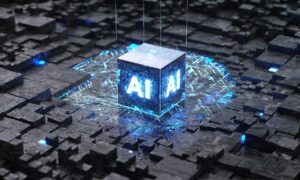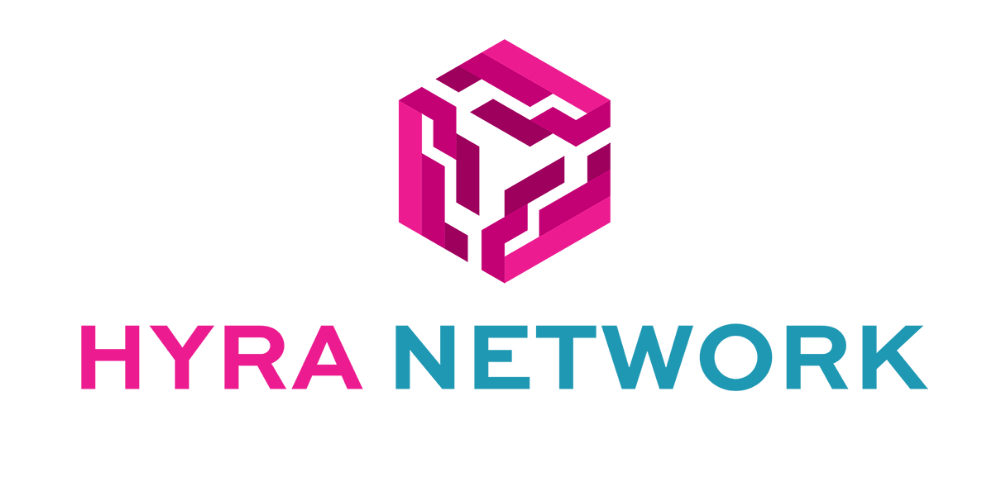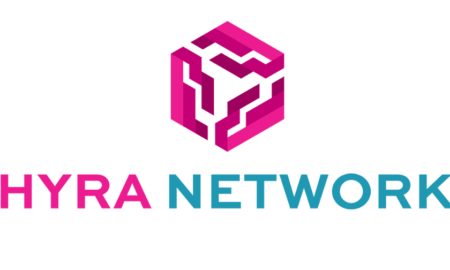The construction industry is facing more and more problems, like rising costs, shorter project timelines, and more complicated designs. These challenges need new ideas to keep projects on schedule and make sure they are sustainable in the long run.
For example, delays and budget issues are common, with many projects going over their original estimates because of poor planning and resource use. Also, safety concerns and environmental effects make it harder to complete projects.
Technology is revolutionizing how these challenges are addressed, offering advanced tools like real-time data analytics, robotics, and Building Information Modeling (BIM). These innovations boost efficiency, minimize waste, and enhance collaboration.
Companies using such technologies report up to 50% productivity gains, while initiatives like drone monitoring reduce risks and improve site management. Together, these tools provide a path toward safer, more sustainable, and cost-effective construction practices in a highly competitive market
The Evolution of Technology in Construction Management
The construction industry has shifted from manual processes to digital solutions for better project management. This change is essential for success in today’s competitive market, where efficiency and innovation are key.
From Manual to Digital: A Historical Perspective
In the past, construction management used a lot of manual methods, like paper blueprints and face-to-face meetings. While these worked for smaller projects, they often led to mistakes, delays, and miscommunication, especially as projects got bigger and more complicated.
Things started to change in the late 20th century with computer-aided design (CAD) software, which allowed architects and engineers to make detailed digital models. In the 1990s, project management software like Primavera and Microsoft Project helped teams plan schedules and track progress better.
Now, in the 21st century, digital tools are changing the construction industry. Technologies like Building Information Modeling (BIM) help teams create 3D models that include design and scheduling. Other tools like drones and sensors provide real-time data, improve safety, and make construction processes easier.
Importance of Embracing New Technologies
In today’s fast and competitive market, using new technologies is essential for survival in the construction industry. Companies face pressure to complete projects faster, cheaper, and more accurately. A report by McKinsey shows that companies using digital tools can increase productivity by 20-30%, while those that don’t may struggle to stay in business.
Anterra Platform provides special tools and information for the construction industry. It helps businesses use construction tools to make better decisions and work more efficiently on projects.
Key reasons to use technology include:
- Better Efficiency: Automation and robotics speed up repetitive tasks, and project management tools help teams work together smoothly.
- Improved Safety: IoT sensors and wearable devices keep track of worker health and equipment, reducing accidents.
- Sustainability Goals: Technologies like 3D printing and modular construction reduce waste and support eco-friendly practices.
- Data-Driven Decisions: Big data and predictive analytics help contractors see risks ahead and manage resources better.
Governments and clients want more transparency and sustainability in construction. Using technologies like blockchain for secure transactions or AI for resource management helps meet these demands and gives companies an edge over competitors.
Key Areas Where Technology is Making an Impact
In the construction industry, technology is changing how projects are planned, managed, and executed. Here are some key areas where technology is making a significant impact:
Project Planning and Design
Latest tools like Building Information Modeling (BIM) and technologies like augmented reality (AR) and virtual reality (VR) are improving how projects are planned and designed.
BIM’s Role in Project Visualization
Building Information Modeling (BIM) is a powerful tool that allows architects and engineers to create detailed 3D models of buildings before construction begins. T
his helps everyone involved visualize the project clearly, reducing misunderstandings and errors. According to a recent report, using BIM can improve project delivery times by up to 30%.
Integrating AR and VR for Design Accuracy
Augmented Reality (AR) and Virtual Reality (VR) are also being used to enhance design accuracy. With AR, users can overlay digital images onto the real world, allowing stakeholders to see how a building will look in its actual environment.
VR lets users walk through a virtual model of the building, helping them identify potential design issues early on. A study found that using AR and VR can reduce design errors by 90%, leading to smoother project execution.
For instance, the Acumatica platform supports AR tools that align project plans with existing infrastructure, improving both speed and precision.
B. Communication and Collaboration
Modern communication tools and cloud-based platforms are streamlining collaboration among all stakeholders, ensuring everyone stays informed and aligned throughout the project.
Cloud-Based Platforms for Real-Time Updates
Cloud-based platforms have revolutionized communication in construction. These platforms allow all team members—architects, engineers, contractors, and clients, to access the same information at any time.
This ensures everyone is on the same page and can make decisions quickly. Research indicates that companies using cloud solutions can see productivity increases of 20% due to improved collaboration.
How Digital Tools Improve Stakeholder Coordination
Digital tools help streamline coordination among various stakeholders by providing centralized communication channels.
For example, project management software allows teams to assign tasks, track progress, and share documents easily. This reduces delays caused by miscommunication and keeps projects on schedule.
C. Construction Site Monitoring
Advanced technologies like drones and IoT-enabled sensors are transforming how construction sites are monitored, providing real-time insights that enhance safety and efficiency.
Drones for Aerial Site Inspections
Drones are becoming essential for site inspections in construction. They can capture high-resolution images and videos from above, giving project managers a clear view of progress without needing to be on-site constantly.
Drones can save time and reduce costs associated with traditional inspection methods. Reports suggest that using drones can cut inspection times by up to 75%.
IoT Sensors for Real-Time Monitoring
Internet of Things (IoT) involves connecting devices to the Internet to collect and share data. In construction, IoT-enabled sensors can monitor equipment health and material usage in real time.
For instance, these sensors can alert managers when machinery needs maintenance or when materials are running low, preventing costly delays. A survey found that IoT applications could reduce equipment downtime by 30%, significantly improving overall efficiency.
Enhancing Efficiency and Safety with Technology
Technology plays a key role in improving both efficiency and safety on construction sites:
- Predictive Analytics for Risk Mitigation: Using historical data, predictive analytics helps forecast potential risks, such as equipment failures or budget overruns. This allows managers to proactively address issues, reducing downtime and project delays.
- Robotics and Automation: Robots perform repetitive, labor-intensive tasks like bricklaying and welding with high precision, cutting labor costs and boosting productivity. For instance, automated machinery reduces workplace injuries caused by manual heavy lifting.
- IoT Devices for Safety Monitoring: IoT-enabled wearables track workers’ health metrics (e.g., heart rate) and detect hazardous conditions like high carbon monoxide levels. Alerts from these devices prevent accidents, ensuring safer working environments.
| Technology | Benefit | Example |
| Predictive Analytics | Risk forecasting and mitigation | Early detection of machinery breakdowns |
| Robotics and Automation | Labor efficiency and injury reduction | Automated bricklaying robots |
| IoT Safety Devices | Real-time hazard detection | Wearable safety trackers for workers |
Revolutionizing Financial and Supply Chain Management
Managing finances and supply chains efficiently is vital in construction to avoid delays and cost overruns. Advanced technologies, like blockchain and automated procurement systems, are transforming these areas, ensuring transparency, accuracy, and streamlined logistics.
A. Financial Management
Technology has revolutionized financial management in construction by offering smarter tools and more secure processes:
- Software for Budgeting and Cost Control: Tools like Anterra CPM simplify budget tracking and cost control by integrating financial data with project workflows. Real-time dashboards offer insights into spending trends, enabling better decision-making and reducing budget overruns.
- Use of Blockchain for Secure Payments and Transparency: Blockchain ensures secure and transparent transactions between contractors, suppliers, and clients. By creating tamper-proof digital records, blockchain reduces payment disputes and improves stakeholder trust. This technology is especially useful in large projects with multiple parties involved.
B. Supply Chain Optimization
Efficient supply chain management is crucial for timely project delivery and cost savings.
- Automated Procurement Systems: Automated systems streamline procurement by analyzing project needs and placing orders for materials in advance. These systems reduce human errors, ensure material availability, and prevent delays. Tools like Anterra’s modules help synchronize procurement with project schedules.
- Technologies to Streamline Logistics and Material Delivery: GPS-enabled tracking systems and IoT devices provide real-time updates on material shipments. This ensures that materials arrive on-site as planned, reducing storage costs and waste. For example, automated tools integrated with Automated WIP optimize material flow by linking supply data with work progress reports.
By combining advanced financial tools and supply chain technologies, construction projects can achieve greater efficiency, transparency, and cost-effectiveness. These innovations set a strong foundation for streamlined project execution.
Quality Control and Assurance
Digital tools are essential for ensuring construction projects meet required quality standards. Software solutions help monitor compliance with construction codes by maintaining accurate records of inspections and tests.
For instance, real-time tracking tools provide updates on critical construction milestones, enabling managers to detect and address quality issues immediately.
This minimizes rework and ensures projects adhere to timelines. Platforms like CPM allow seamless integration of quality assurance data with project workflows, improving overall project outcomes.
Using Data Analytics for Better Decisions
Data analytics transforms how construction projects are planned and executed. By analyzing vast datasets, it can predict delays, budget overruns, or resource shortages before they occur.
Machine learning enhances this by providing actionable insights, such as the optimal allocation of labor and materials to improve efficiency.
For example, tools integrated with job forecasting modules can generate precise predictions about project outcomes, empowering managers to make informed decisions that save time and money.
Role of Emerging Technologies
Emerging technologies are reshaping the construction industry, enhancing efficiency, precision, and safety in project management. Below are some key areas where these innovations are making an impact:
A. Artificial Intelligence (AI)
AI is revolutionizing workflows and predictive maintenance in construction:
- Predictive Maintenance: AI-powered algorithms analyze machinery data to predict equipment failures, reducing downtime and repair costs.
- Workflow Optimization: AI identifies bottlenecks in construction processes, suggesting ways to enhance productivity.
B. Robotics and Automation
Robots and automated systems improve efficiency in labor-intensive tasks:
- Applications: Autonomous machines are used for excavation, bricklaying, and concrete pouring with unmatched precision.
- Efficiency: Robotic bricklayers can complete tasks 5x faster than humans, saving time and labor costs.
C. Internet of Things (IoT)
IoT connects devices and systems for smarter construction:
- Smart Sensors: Monitor environmental conditions like temperature and humidity, ensuring material quality.
- Performance Metrics: Track equipment usage to optimize efficiency and reduce energy consumption.
70% of construction companies plan to increase IoT adoption by 2025.
| Technology | Functionality | Benefit |
| Smart Sensors | Monitor conditions & equipment usage | Improved material quality, reduced costs |
| IoT Devices | Track worker safety | Real-time alerts for hazard prevention |
D. Augmented and Virtual Reality (AR/VR)
AR and VR improve visualization and training:
- Design Reviews: AR/VR tools simulate project designs in real-world settings for accurate reviews.
- Training Simulations: Workers use VR to practice operating machinery in a safe environment.
- Example: VR-based training has increased worker proficiency by 30% in complex equipment handling.
E. Drones and Aerial Imaging
Drones provide critical insights from above:
- Site Surveys: Drones capture high-resolution images for accurate site mapping.
- Progress Tracking: Frequent aerial imaging monitors project milestones.
- Safety Monitoring: Drones inspect hazardous areas, reducing risks for on-site workers.
Drone usage in construction increased by 239% from 2018 to 2023.
| Technology | Use Case | Advantage |
| Drones | Site surveys, progress tracking | High accuracy, improved safety |
| AR/VR | Design reviews, training | Better precision and worker skills |
Future of Construction Management with Technology
Future of construction management will be shaped by cutting-edge technologies, transforming how projects are designed, executed, and maintained:
- Modular and Prefabricated Construction: Off-site construction of modular components is gaining attraction, reducing waste and speeding up project timelines. For example, prefabrication has reduced construction time by up to 50% in certain projects.
- 3D Printing for Rapid Prototyping and Construction: 3D printing enables rapid production of building components and even entire structures, lowering costs and promoting sustainability. By 2025, the 3D printing market in construction is expected to grow significantly, streamlining the construction of custom designs.
- Digital Twins: These virtual replicas of physical projects allow real-time monitoring and simulation of building performance. They improve decision-making by predicting potential failures and optimizing resource usage. For example, digital twins are already being used to manage complex projects like smart cities.
Practical Tips for Implementing Technology in Construction
Implementing technology in construction requires strategic planning and a focus on adoption:
- Evaluate the Right Technologies: Assess your business needs and choose solutions that align with your project goals.
- Train Employees: Provide regular training to ensure your workforce understands how to use new tools. A well-informed team accelerates tech adoption and productivity.
- Build a Tech Adoption Culture: Encourage a culture that values innovation and openness to change. Recognize employees who excel in using new technologies.
- Scalability and ROI Assessment: Choose scalable solutions that grow with your business. Always evaluate the return on investment (ROI) to ensure the technology adds measurable value to your projects.
By leveraging emerging trends and focusing on implementation strategies, construction firms can stay competitive while maximizing efficiency and innovation.
Conclusion
The construction industry is changing due to advanced technologies like Building Information Modeling (BIM), IoT devices, and robotics. These tools improve project planning, execution, and safety, helping companies meet demands for efficiency, sustainability, and accuracy.
Using digital innovations enhances teamwork, reduces costs, simplifies workflows, and lowers risks, ensuring projects are completed on time and within budget. In the future, trends like modular construction, 3D printing, and digital twins will shape construction management.
By adopting these technologies and encouraging innovation, construction firms can remain competitive. Success depends on strategic use of these tools, ongoing training for workers, and using data to make smart decisions.
FAQs
How is BIM changing construction project management?
BIM enhances construction management by providing a digital representation of physical structures. It streamlines collaboration, reduces errors, and optimizes resource allocation. This results in improved efficiency, cost savings, and better project outcomes.
What are the benefits of using IoT in construction site monitoring?
IoT devices enable real-time monitoring of equipment, site conditions, and worker safety. They improve decision-making by providing actionable data, reducing delays, and enhancing security. This fosters more efficient and safe construction processes.
How do AR and VR technologies improve design accuracy and training in construction?
AR and VR offer immersive visualization of designs, enabling better spatial understanding and error identification. They enhance worker training through realistic simulations. This results in improved design accuracy and workforce preparedness.
What strategies can construction firms use to implement new technologies?
Firms should start with clear objectives and pilot projects for testing. They should invest in employee training, collaborate with tech providers, and analyze ROI regularly. This ensures smooth integration and maximized benefits from new technologies.

































